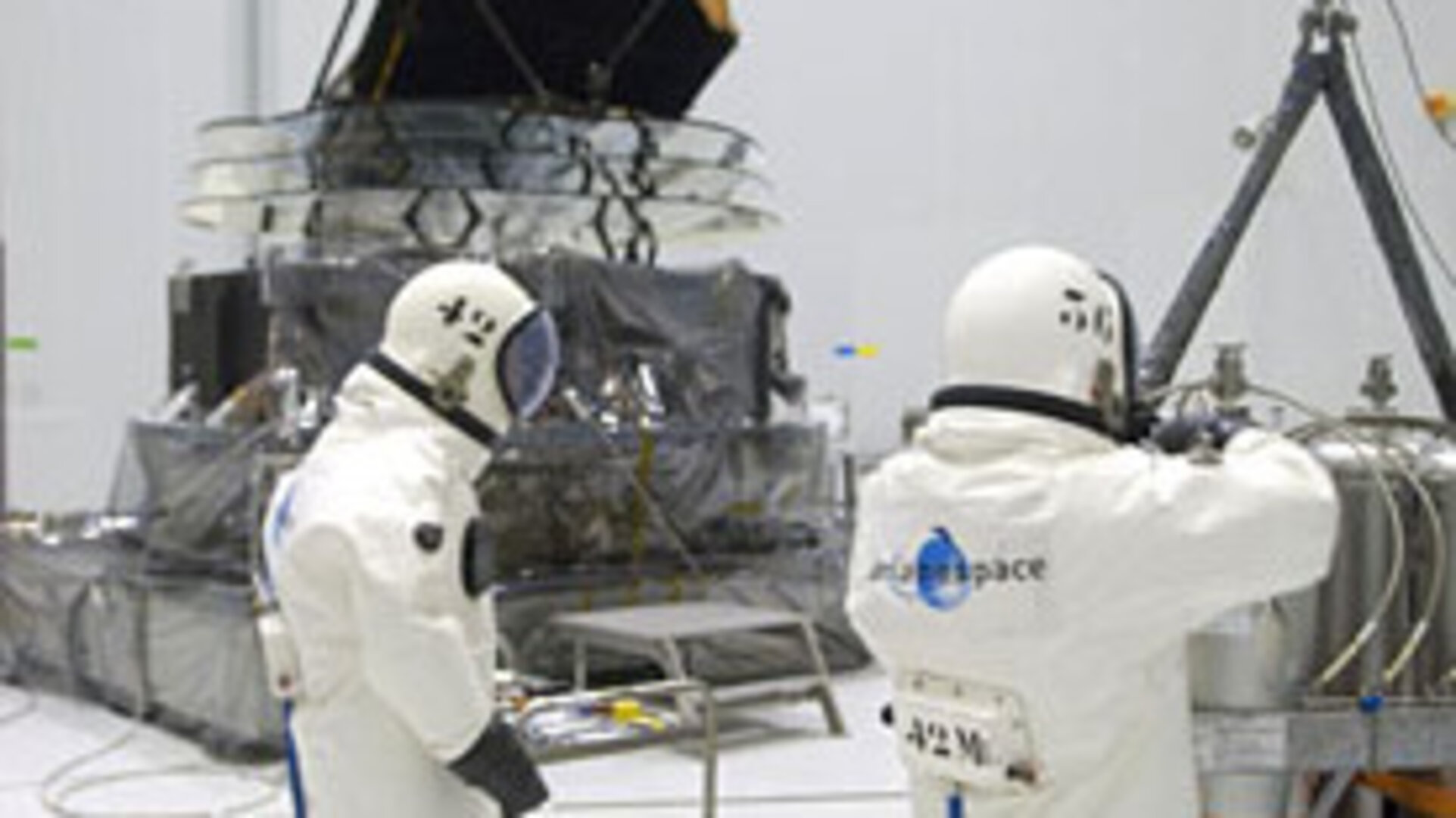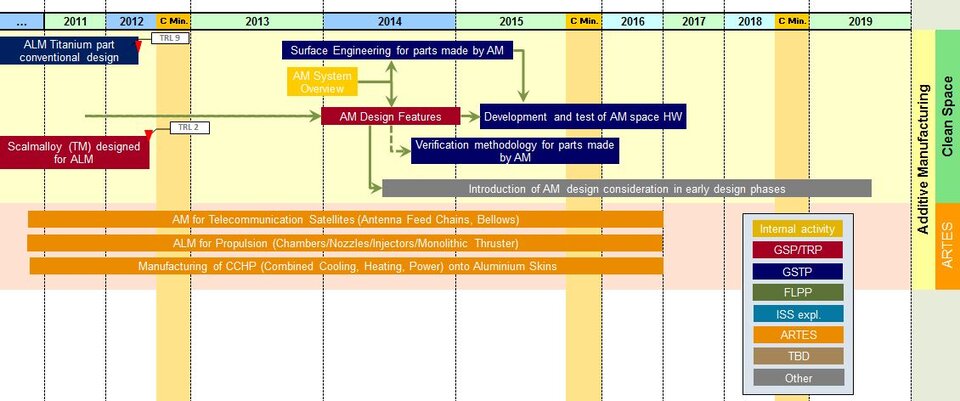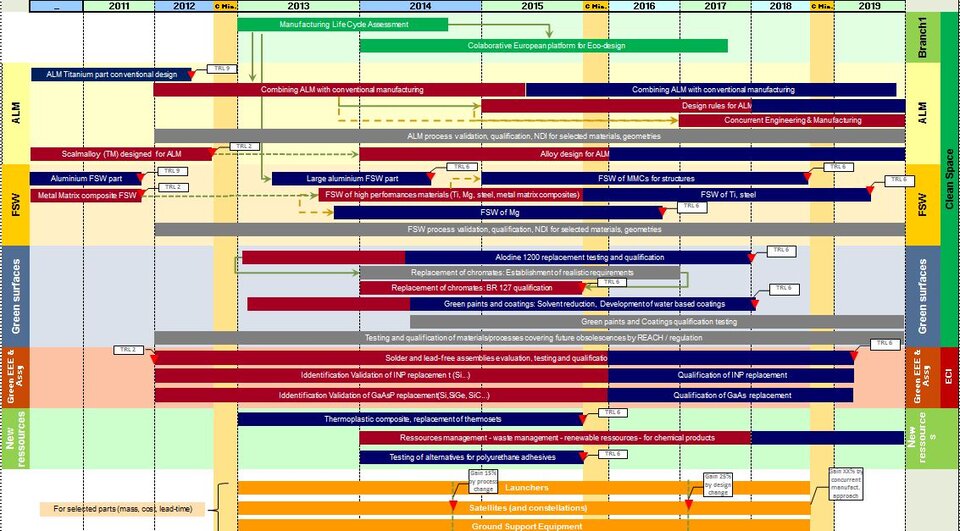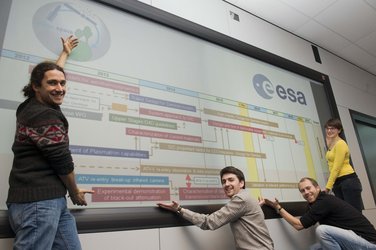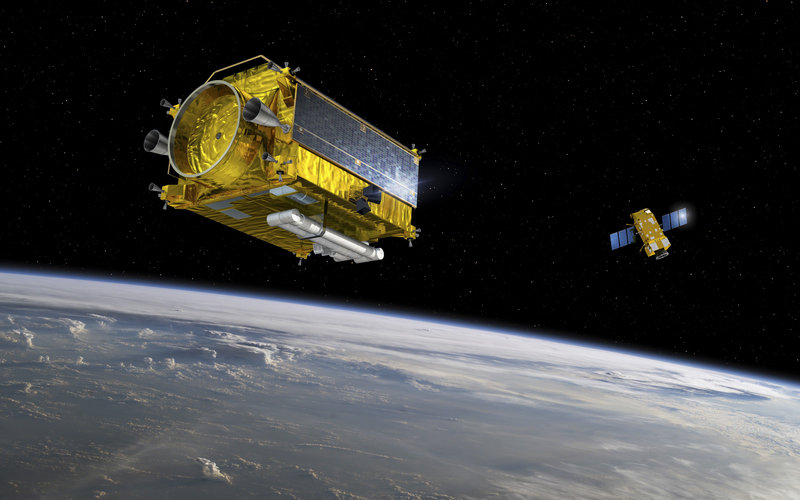Green technologies
Characterising the environmental impacts of current activities is one side of the coin; the other is to develop green technologies as a means of mitigating these impacts and remaining compliant with environmental legislation.
In summary, green technologies shall allow ESA to:
- Reduce the energy consumption during the life-cycle of a space mission
- Use resources in a more sustainable way
- Limit and control the use of harmful substances for human health and biodiversity
- Adopt a proactive approach towards environmental legislation
- Manage the residual waste and polluting substances resulting from space activities.
A candidate green technology shall be assessed through an 'eco-statement'.
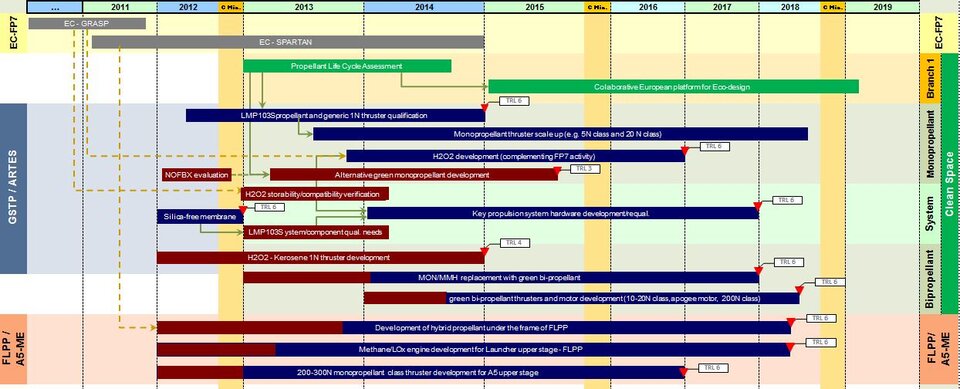
Each candidate shall have a dossier compiled including a multi-criteria Life Cycle Assessment at system level, addressing not only the impacts that fall under the parameters recommended by the EU's Joint Research Centre but also those impact indicators that are considered as essential by the Agency: natural environment, human health, natural resources, climate change and energy efficiency.
An eco-statement should also address the assessment of the technology end-of-life, including its waste management on the ground or evaluation of its space debris generation potential.
The dossier shall also list and classify all the harmful substances handled or produced throughout the technology's life-cycle, and will evaluate the frequency of hazard events and assess its consequences for the environment.
A green technology should not fulfill its green requirements if its impact reduction creates added impacts further down its life cycle or within the system it operates in, without reducing the overall environmental burden.
Candidate technologies
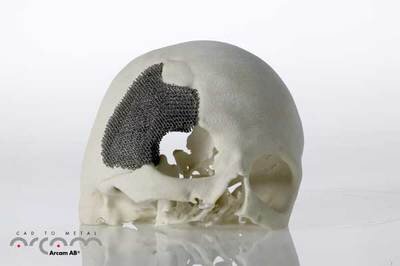
Green technologies identified to date include green propulsion, aimed at reducing the toxicity of spacecraft propellants. Classical chemical propellants such as hydrazine and nitrogen tetroxide demand special protective measures such as cumbersome Self Contained Protective Ensemble (SCAPE) suits for fuelling technicians and extra valves in flight systems as well as special handling procedures.
Hydrazine has also been included on REACH’s list of ‘Substances of Very High Concern’, and other toxic liquid propellants may yet be added. The risk has driven research into green propulsion, which has been part of ESA’s Technology Harmonisation roadmap since 2002, with some 38 European companies or universities working on the subject, with some success in developing ADN- and hydrogen peroxide alternatives.
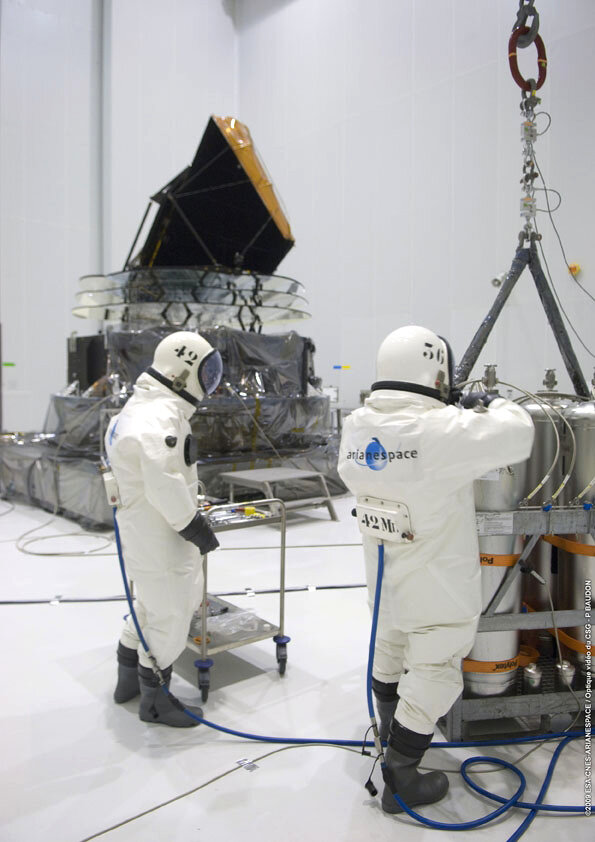
The next steps to be taken include the qualification of a green monopropellant suitable for a spacecraft upper stage, then compatible thrusters, moving onto hybrid propellants and associated hardware.
Other candidate green technologies include advanced joining technologies, replacement of chromates used for surface coating and bonding, tartaric sulphurising anodising for corrosion protection and bonding, lead-free assembly, solvent cleaning and green electronics lacking toxic materials.
Novel manufacturing techniques and processes will also be considered, such as additive manufacturing, where a product is built up gradually layer by layer instead of by whittling down a large block, saving on raw materials and energy.


